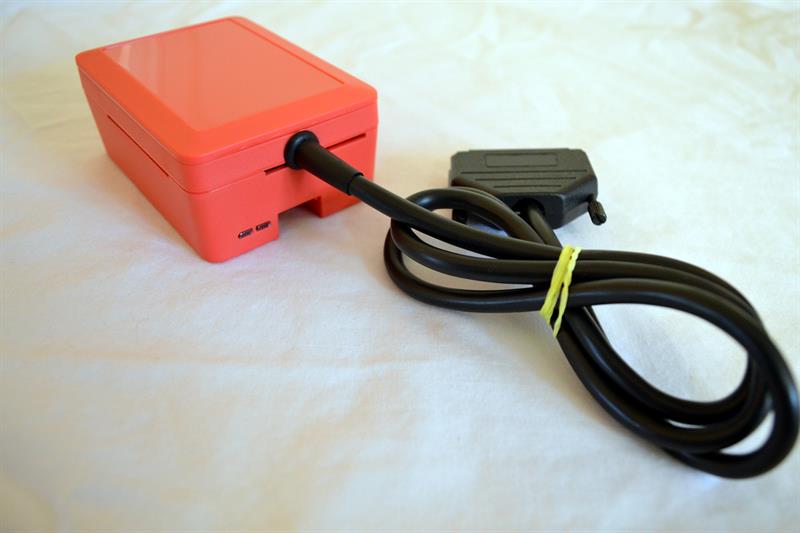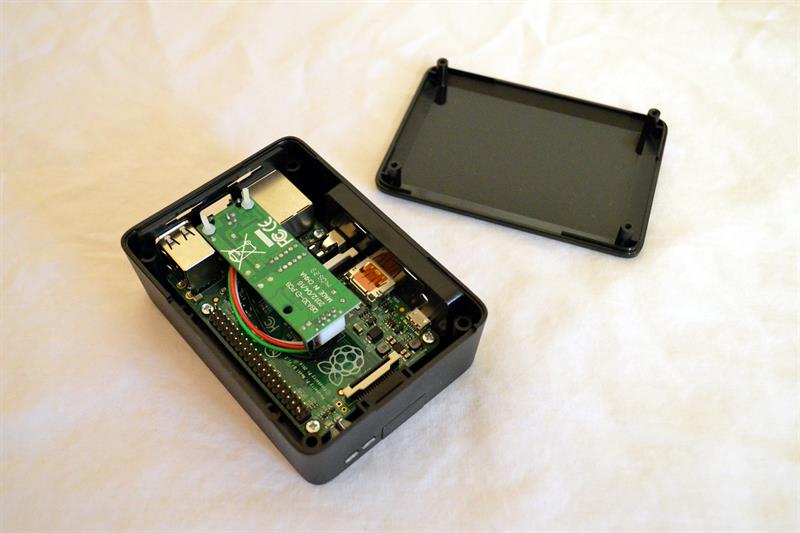With its small form factor and low cost, Raspberry Pi is becoming an attractive alternative to more traditional embedded computers and the availability of versatile cases and other accessories has helped turn them into neat, self contained and secure system solutions. Demand has started to take off.
Cost is the main reason why commercial companies are choosing to use Raspberry Pi. Previously, single-board computers cost upwards of £100 and, before that, custom designs in the order of £1000 were prohibitively expensive for the types of application where Raspberry Pi is now finding a home.
However, cost isn’t everything and, while a price tag of around £30 may be appealing, these companies need the ability to create a complete solution requiring more than just a credit card sized computer board – they need the ability to customise their design, to package it to suit the target environment and to equip it with the necessary interface and connectivity features. Often, for less tech savvy companies, this will require the support of specialists.

Fully assembled remote monitoring unit with cable for connection to host machine
Deployments
Companies that lease amusement equipment have, typically, relied on staff to report a problem or have waited for engineer visits to conduct a routine service or fix a fault – so reporting a fault could end up taking days.
One company that viewed that as acceptable wanted to be able to monitor machine status remotely and get feedback of operating data on a day-to-day basis. The solution was a unit developed around the Raspberry Pi that sits within the amusement equipment. This ‘black box’ can capture information from the host machine and communicate data either immediately or on demand back to a monitoring centre via Wi-Fi and/or 3G networks.
In specifying this monitoring unit, it was realised that because the company has little control over the machine’s environment, it would be prudent to provide a back-up battery within the unit to sustain it during a power outage. The company also wanted to protect the machine from unauthorised access and to send an alert in real-time if anyone other than an engineer opened the machine. Naturally, this functionality requires the unit to be compact enough to be mounted within the host without interfering with its mechanical and electrical systems.
This requirement was met with a design that placed the Raspberry Pi in a case large enough to accommodate a lithium-polymer back up battery, together with a custom PCB that both provides a fixing point for the battery, the battery control circuitry and the logic level conversion and serial interfaces to communicate with the machine. The case, see figure 1, also contains an RFID transceiver with printed antenna that detects the RFID tag worn by an authorised service engineer to avoid triggering the anti-tamper alarm.
Another feature of the case used for this design is the provision of a cover for the SD card slot that provides further security against tampering. Figure 2 shows the fully assembled case and the custom designed cable used to connect this monitoring unit with the host.
Another deployment using Raspberry Pi involves point of sale (PoS) systems deployed at fast-food restaurant counters to simplify the ordering of meals. In recent years, handheld terminals have extended this capability to orders taken at the table in more traditional restaurants. Restaurants that provide a takeaway or delivery service can also benefit from the same systems to process orders placed online or by telephone.
One downside of telephone ordering is that, in addition to entering the food requirements, the person taking the order has to get the customer’s name and delivery address. One company providing a restaurant PoS and delivery management system realised it might be able to recognise regular customers from their phone’s caller ID and use this information to streamline and speed the ordering process.
This requirement has been translated to a unit designed around a Raspberry Pi, combined with a USB powered modem, that sits between the client’s phone network and existing hardware. This unit has to be discrete and secure enough to be placed in the client’s premises and the implementation has to ensure no disruption to their legacy network connection.
For this particular design, the Raspberry Pi was modified by the case supplier to remove a pair of USB ports in order to accommodate the modem card within the case and to connect it using a custom designed cable. Security is reinforced by the use of a cover for the SD card, preventing access the system’s customised program code. In addition, each unit has its line connection tested and is then identified for record-keeping purposes with a sticker that displays a unique serial number and barcode.

Internal view of caller ID unit showing the Raspberry Pi and case modified to accommodate a telephone modem
Versatility underlined
Raspberry Pi’s versatility is underlined by the extent to which it can be applied to a wide range of applications. Making these a reality requires a diverse range of interfaces and the means to package them into functional units.
System developers often bridge the gap between the suppliers of the Pi boards and their accessories and end-users, who require a solution that is fit for purpose.
An example is where an LCD touchscreen has been mounted on a case adapted to provide screw fixing holes and a cut-out to accommodate the screen and to allow connection using a custom cable. As with the examples above, the program code, written around the Pi’s kernel operating system but which provides for calibration of the touchscreen, is embedded in the protected SD card.
The appeal of the Raspberry Pi is many fold, but more and more people are recognising that it offers a low-cost entry point to a range of embedded computing applications that could not justify the investment cost or complexity of developing a ground up solution using an MCU.
While industrial users will demand robust packaging, the ability to add simple user interfaces and program the Pi to perform dedicated tasks opens up a range of uses that extends well into the spheres of industry and commerce.
Author profile:
Jason Barnett is engineering manager at Cyntech Components













